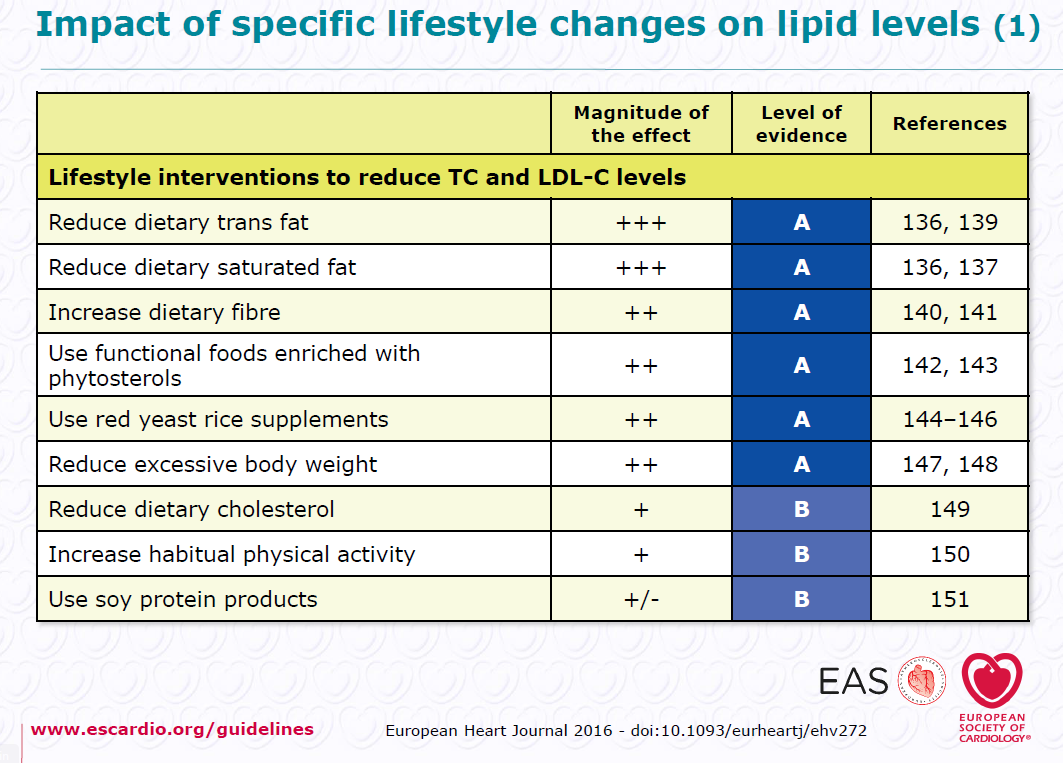2016 ESC/EAS guidelines for the management of dyslipidaemias
The guidelines recommend a diet low in saturated fat with a focus on wholegrain products, vegetables, fruit and fish. Further, the guidelines outline in detail specific diet and lifestyle interventions that reduce LDL-cholesterol levels.
The table below gives a clear picture of the impact lifestyle changes can make on LDL-cholesterol levels where more “+” mean higher efficiency of intervention in LDL-cholesterol lowering, while level of evidence A refers to data derived from multiple randomized clinical trials or meta-analyses and level of evidence B indicates data derived from a single randomized clinical trial or large non-randomized studies.

Regarding functional foods for the treatment of dyslipidaemias, the Guidelines specifically outline the role of foods with added plant sterols and stanols. Specifically, they affirm that the daily consumption of 2 g of plant sterols or stanols can effectively lower LDL-cholesterol by 7-10% in humans.
Furthermore, the Guidelines refer to target groups for whom plant sterols/stanols may be considered such as
- individuals with high cholesterol levels at intermediate or low global CVD risk who do not qualify for drug therapy
- as an adjunct to drug therapy in high- and very high-risk patients who fail to achieve LDL-cholesterol goals on statins or are statin intolerant
- in adults and children (>6 years) with familiar hypercholesterolemia (FH), in line with current guidance
IPSSA has always supported that foods with added plant sterols and stanols as part of a healthy diet and lifestyle can contribute significantly to lowering LDL-cholesterol, which constitute a major risk factor for CVD. The cholesterol-lowering effect of plant sterols and stanols has been proven in a vast number of clinical studies, which formed the basis of authorized health claims by international regulatory bodies in many countries around the world. The cholesterol-lowering benefit is further recognized in many guidelines for the management of dyslipidaemias of leading societies such as in the recently published 2016 Guidelines of these two leading European societies.

